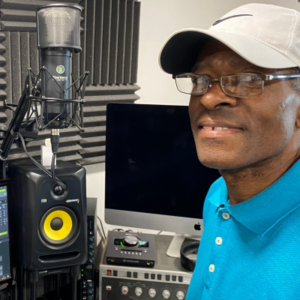The Supremes were formed in Detroit in 1959, when four girls from the Brewster-Douglass public housing project decided to set up a group as a sister act to the Primes, a boy band from the same area, which grew into The Temptations. The girls were Florence Ballard, Mary Wilson, Diane Ross and Betty McGlown, who left in 1960 and was replaced by Barbara Martin. Naturally they called the new group The Primettes.
Diane Ross decided to ask an old neighbour for help in getting an audition with a local record company. The company was, of course, Motown Records and the neighbour, as luck would have it, was Smokey Robinson. An audition was duly arranged, but Berry Gordy Jr. thought the girls were too young and asked them to finish school and then come back to see him. They came back virtually every day after school, trying to persuade Gordy to let them join, until he finally agreed that they could help out in the studio with handclaps and backing vocals. Gordy did, however, sign a local guitarist who was playing with the girls. That was Marvin Tarplin, who later joined the Miracles.
In 1961 Gordy gave in and signed the girls to Motown Records, changing the group’s name to The Supremes. They recorded two singles on the Tamla label in 1961 as a group of four. Two further singles followed in 1962. The first of these, “Let Me Go the Right Way”, entered the charts, reaching number twenty-six on the Billboard R&B Singles Chart and number ninety on the Billboard Hot 100 Singles Chart. The song was written and produced by Berry Gordy. It has a bouncy beat that was to become familiar, with a simple arrangement. The B-side is much more interesting. “Time Changes Things” is a song written by Brian Holland, Lamont Dozier and Janie Bradford. It has a stronger, more complex arrangement and also develops the harmony vocal lines in a way that indicates the potential the group had for future success.

The Supremes as a trio from 1962
Photo: Publicity Photo (Wikimedia Commons)
Barbara Martin left in 1962 to start a family, just before the release of the group’s first album, “Meet The Supremes”, towards the end of that year, produced by Gordy and Smokey Robinson. The other group members decided to continue as a trio. At this stage, each member of the group was taking a share of lead vocals, with considerable variation in the impact of the different voices.
The Supremes released three singles in 1963. The Clarence Paul song “My Heart Can’t Take It No More” in February, Smokey Robinson’s “A Breath Taking Guy” in June, and Holland, Dozier, Holland’s “When The Lovelight Starts Shining Through His Eyes” in October. The first failed to chart, the second reached number seventy-five on the Billboard Hot 100 Singles Chart and the third peaked at number twenty-three on the Billboard Hot 100 Singles Chart. More significantly, the Cash Box R&B Singles chart had the final song at number two, and it also charted in Australia. The H-D-H magic touch was starting to show. Their first big hit wasn’t far away.
The Supremes had ended 1963 with their first top-forty single. They entered 1964 full of hope but saw “Run, Run, Run” peak at number ninety-three on the Billboard Hot 100 Singles Chart. It was aimed squarely at the Pop market, with a strong “wall-of-sound” feel, but the triplets pounded out on the piano throughout the song may have irritated some listeners.

Fortunately they had an ace up their sleeve. “Where Did Our Love Go” was finally released in June, entering the Billboard Hot 100 Singles Chart at number seventy-seven. Over the next six weeks, it climbed the rankings until by August it reached number one. The girls were on tour at the time as part of the American Bandstand Caravan of Stars, starting the tour at the foot of the bill and ending it at the top. The studio band for the 1963 recording consisted of James Jamerson (bass), Richard “Pistol” Allen (drums), Eddie Willis and Robert White (guitars), Earl Van Dyke (piano). Mike Terry (baritone sax) and Mike Valvano, who contributed the vital foot-stomping.
The song subsequently charted in twelve other countries, reaching the top in Canada and New Zealand, and peaking at number three in the UK. It sold over two million copies in the USA.
The girls had entered Motown as schoolgirls. Now, after a few years of patient trying, they had become pop stars, thanks to some good songs from Holland, Dozier, Holland, some wonderful session musicians, and some luck! The key question was, could they sustain that level of success?
At this point, Berry Gordy took the decision to release the Supremes’ second studio album, taking its title from the number one single “Where Did Our Love Go”. It was released in August and sailed to the top of the Billboard R&B Albums Chart, whilst reaching number two on the Billboard 200 Albums Chart.

Berry Gordy opted to release two more singles from the album in 1964, hoping for more number ones. He was not disappointed. First “Baby Love” and then “Come See About Me” made it to the top. This was the first time that any act had achieved three number one hits from the same album. It was not to be the last record set by the Supremes.
“Baby Love”, released in September, is clearly modelled on “Where Did Our Love Go”, with Berry Gordy directing Holland, Dozier, Holland to repeat the formula. The session band this time again featured Earl Van Dyke (piano), Eddie Willis (guitar), James Jamerson (bass), Richard “Pistol” Allen (drums), Mike Terry (baritone sax) and Mike Valvano, who did the foot-stomping once more. Robert White did not play on this recording; instead Jack Ashford played vibraphone and Henry Cosby added tenor sax. The insistent piano beats have a variation that “Run, Run, Run” did not and the change of key lifts the song. The saxophone solo adds a nice touch.

The song topped the US and UK Pop charts in October and went on to chart in thirteen countries worldwide, including such disparate markets as Sweden, Singapore and South Africa. It was nominated for the Best R&B Recording Grammy, losing out to Nancy Wilson’s “How Glad I Am”.
The follow-up “Come See About Me”, issued in October, may have seemed a bit too soon, but the Supremes’ band wagon was rolling. The single became their third number one of the year in December, losing the top spot over Christmas but then regaining it in January 1965, after the girls sang the song on the Ed Sullivan TV Show on 27th December. (This was their first appearance on the show, with sixteen more to come!). The band showed two changes: Joe Messina came in for Eddie Willis on guitar and Uriel Jones replaced Allen on drums. The band recreated the steady pulsating beat of the earlier hits without difficulty.

For the first time, Berry Gordy’s vision of a musical production line seemed to be achievable. Thanks to the Supremes, Motown was now world-famous. It was no surprise, therefore, when, at the end of 1964, they took over from Martha Reeves & the Vandellas as the best girl group of 1964.
















